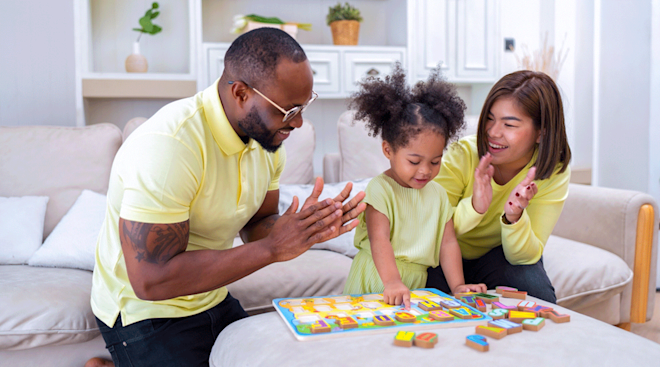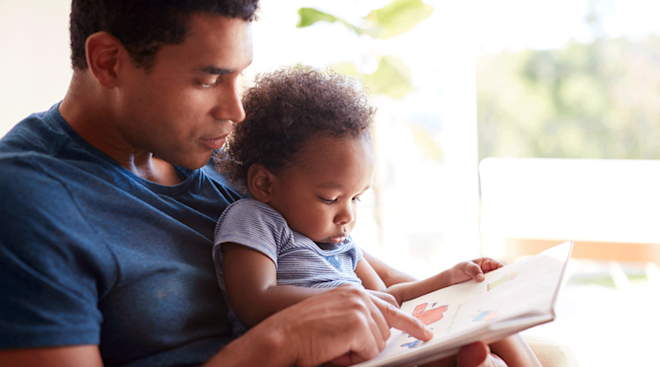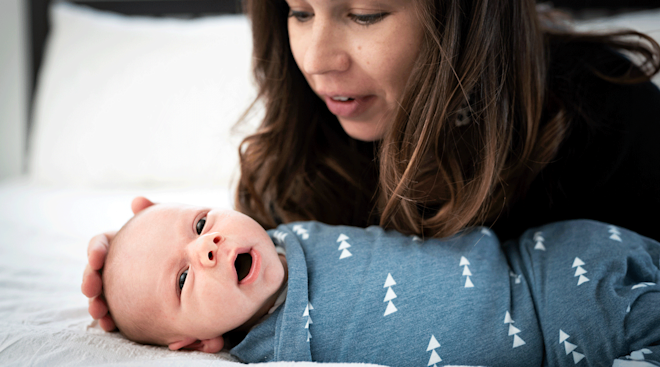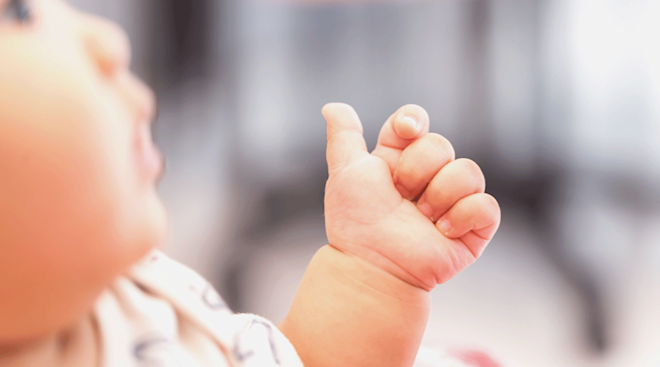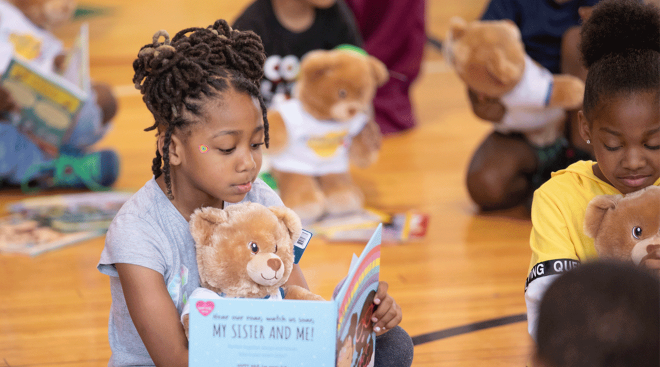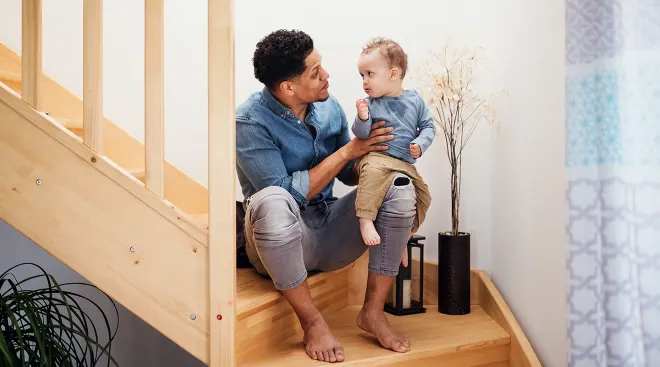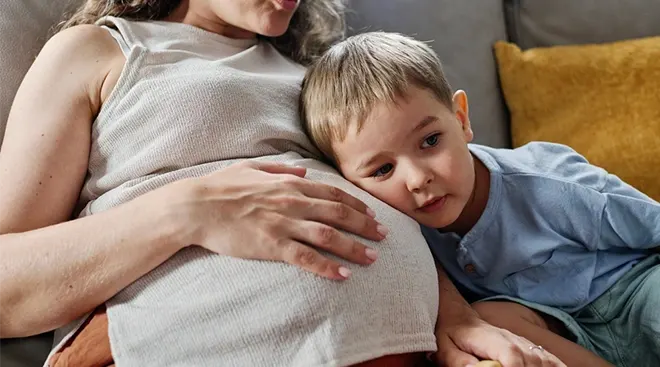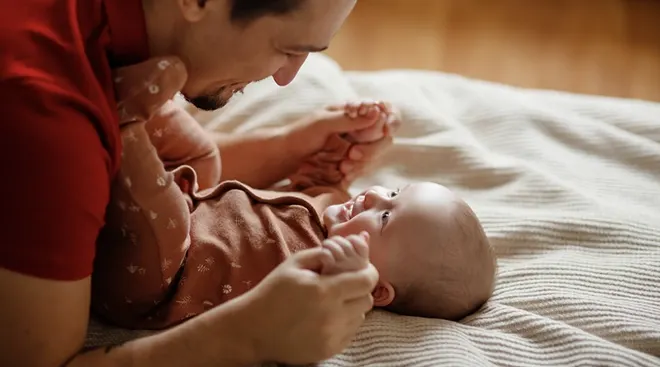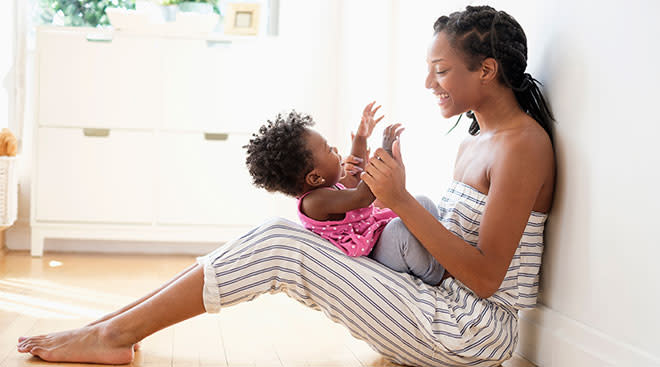How to Encourage Your Toddler’s Speech Development
Babies typically say their first words around their first birthday (it’s an exciting time for a newly minted toddler!). Of course, all children develop on different timelines. Some little ones are early babblers, while others express themselves verbally a bit later on. As with all milestones, there’s a range for what’s considered normal. Of course, if you’re eager to chit-chat with your cutie-pie, there are things you can do to encourage their speech development. Read on to get tips from speech-language pathologists, and find out what to do if your toddler isn’t talking yet.
Ready to help your little one embrace their chatty side? Practice makes perfect, and every effort should help them progress in their speech development and language skills. Simply put, the more you engage in conversation and encourage your kiddo to use their words, the better. Here’s how you can get started.
1. Narrate your day
“Talk to your child about what you’re doing. Describe objects; what you see; how you feel and what you hear, smell or taste,” suggests Avivit Ben-Aharon, MS Ed., MA, CCC-SLP, founder and clinical director at Great Speech, a virtual speech therapy platform. Walk them through the steps as you’re getting them dressed, making their lunch and going about your day together. And don’t be afraid to use specific, descriptive words. For example, instead of saying “Can you bring me that?,” you could say, “Can you bring me the purple ball?” Using a combination of nouns and adjectives enriches your child’s language.
2. Avoid baby talk
Talk to your child in a comfortable and “normal” voice, advises Ashley Marshall, CCC-SLP, a speech language pathology clinical specialist at Hopebridge Autism Therapy Centers. While ‘baby talk’ is great for piquing the interest of an infant, it’s best to lose the sing-songy voice and word-play pattern once your kiddo is a bit older. “Find a happy medium by exaggerating your speech, slowing your rate and using a higher pitch, but still use full sentences and have full-on conversations,” Marshall adds.
3. Use “wait time”
“When talking and interacting with your toddler, pause and wait at least 5 to 10 seconds to give them a chance to make a sound or say a word,” says May Sofi Brennan, MS CCC-SLP, a speech language pathologist and the co-founder of Big Little Learners. Babies and toddlers need time to process language, so this gives them an opportunity to process and understand what you’re saying, and then decide whether they’re going to respond.
Moreover, avoid predicting what your child is going to say, and try not to anticipate their needs and fulfill them before they have a chance to express themselves, advises Ben-Aharon. “When kids are young, it’s very natural for us to want to do everything for them. But, in reality, we’re better off setting them up for situations where they need to use their own words to communicate,” she says.
4. Let your child finish your sentences
You don’t want to finish your child’s sentences, but you can let them complete yours. “‘Cloze statements’ are essentially sentence completion tasks,” explains Brennan. “To use this strategy, choose a familiar saying and then pause and wait before saying the last word, giving your child a chance to fill it in.” You can also try this with nursery rhymes or songs. For example: “Twinkle, twinkle, little…”
5. Read together
Sit down and read a story with your child, suggests Marshall. “The keyword here is ‘with,’” she says. It should be an interactive experience. “Engage your child in the story by showing them the words and pictures… Even if they’re not talking back, the exposure to language and positive interaction is impactful. If your child is talking back and engaging, praise them! Repeat what they’ve said and restate their language,” advises Marshall.
6. Engage in imaginative play
Have fun with your child! “There’s no right or wrong way to play as long as you’re interacting,” says Marshall. “It’s a great opportunity for modeling and exposure to language.” Also try to engage in activities that require turn-taking, such as imitating actions or games of peek-a-boo. “Language and communication are successful when we take turns, so teaching and exposing our kids to this concept is important,” says Marshall.
7. Use gestures and sign language
If your child isn’t yet verbally expressing themselves, you can try to use some early sign language to help eliminate the frustration factor. “Gesturing with your child teaches them how to communicate even when they’re not quite ready to use words yet,” says Ben-Aharon.
8. Give your toddler choices
Giving options provides your toddler with a model of what you want them to express, making it easier for them to say the words themselves, explains Brennan. For example, ask your child “do you want animals or trucks?” Use visuals when offering choices to help your child understand the question and the possibilities.
9. Limit screen time
Between YouTube and streaming TV, the toddler-focused entertainment options are seemingly endless. Use screen time wisely and sparingly. “Although there are great educational programs for vocabulary development, they significantly lack the social aspect of communication,” says Marshall. “Programs can supplement in-person and real language exposure, but can never replace it.”
There’s a range of ages for when kids develop certain speech and language skills. “The general rule of thumb for language development is that a child is producing one more word than their age,” explains Marshall. For example, a one-year-old will probably be able to put two words together, a 3-year-old should be putting four words together, and 4- to 5-year-olds are likely stringing together sentences and carrying on conversations, she adds. Every child is different, though, so try not to stress or jump to conclusions. Instead, talk to your pediatrician about any and all concerns.
“When a child is at the two-year checkup, typically a pediatrician would ask if your child is communicating,” says Ben-Aharon. Of course, you don’t have to wait for this appointment to flag any potential issues. Moreover, you can also reach out directly to your state’s Early Intervention program (meant for children up to 3 years old) to have a speech-language pathologist come to your home for an evaluation, advises Brennan. They’ll advise you on any necessary next steps.
“Time with an experienced and qualified speech and language pathologist is the best resource for any child struggling to produce clear and fluent speech,” says Ben-Aharon. “Don’t wait to get started with speech therapy. The sooner your child gets started, the better the potential outcome.”
Please note: The Bump and the materials and information it contains are not intended to, and do not constitute, medical or other health advice or diagnosis and should not be used as such. You should always consult with a qualified physician or health professional about your specific circumstances.
Plus, more from The Bump:
Avivit Ben-Aharon, MS Ed., MA, CCC-SLP, is the founder and clinical director at Great Speech, Inc., a virtual speech therapy company founded in 2014. She is recognized as a trailblazer for nationwide virtual access to speech therapy, allowing anyone who is committed to improving their communication to receive expert services, regardless of location or scheduling limitations. She holds an undergraduate and a master degree in speech-language pathology from The City University of New York. She earned a master of science in special education and teaching from Hunter College.
May Sofi Brennan, MS CCC-SLP, is a speech-language pathologist and co-founder of Big Little Learners. She received her master’s in communication disorders from Columbia University. . Ashley Marshall, MS, CCC-SLP, is a speech-language pathology clinical specialist at Hopebridge Autism Therapy Centers.
Navigate forward to interact with the calendar and select a date. Press the question mark key to get the keyboard shortcuts for changing dates.






































